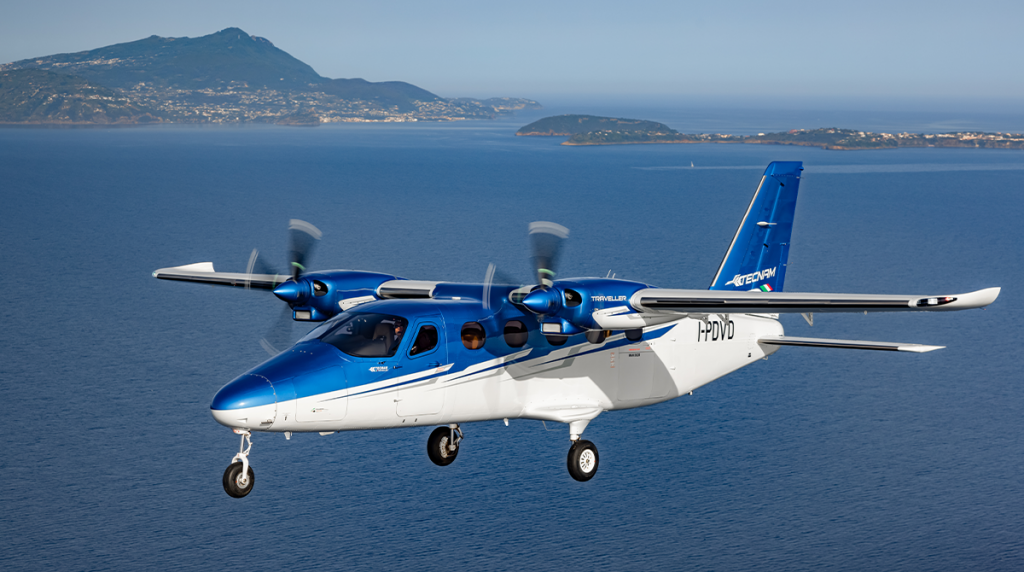
GENEVA—Artificial intelligence will play a key role in real-time tactical route planning for flyvbird—an on-demand, sustainable regional air mobility carrier which plans to begin operations in Europe with an initial fleet of Tecnam P2012 Traveller aircraft.
Discussing the role of AI in planning for flyvbird at EBACE, founder Tomislav Lang says that, together with other founders, “we found out we have found a ‘magic juice’ that enables us to deliver this central market connectivity based on AI technology. We have come up with our aviation tech solution, which will help us derive the perfect efficient network which will change on a daily basis.”
Designed to blend the best characteristics of regional and business aviation, flyvbird will base its network on a pure on-demand customer-centric basis. The airline, which also plans to introduce a follow-on electric-powered version of the P2012, says its goal is to fly faster at the same cost as a train or car, across an adaptable route system which will constantly evolve to suit demand as directed by proprietary customised software.
Speaking at a panel session organized by UAS International Trip Support and Emerald Media, Lang says: “We're giving the power of the airlines to our customers. They will tell us the central markets they want us to connect to. We can offer that because we'll be using current aviation technology with the Tecnam P2012 that can fly into airports with runways less than 900 meters long. We're looking already into future technologies—electrifying aviation—and having aircraft in place that can land on even smaller strips.” The plan is to access grass root markets “that are untouched until today,” Lang says.
Explaining the basis behind the use of AI, he says: “The fulfillment algorithm and the product algorithm and the mathematics behind that are constantly running a new calculation on the best way possible to utilize our aircraft within the requested customer demand. That becomes a perfect fit for the customer and us because with this technology approach we get a much faster and better guess on the shape of our network. We cannot build it on a classic overlay model.”
The project is scalable, Lang says. “We're looking into a 100 aircraft-plus fleet over the next five years. But you cannot do that with big aircraft at the beginning so we're looking at 9-seaters. We know from business aviation that there is a demand to fly into those de-centralized markets.”
